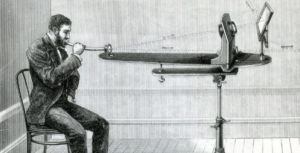FindLight Blog » Findlightopedia » Page 28 of 42
Graphene Silicon Devices for Photonics Applications
Improving Communications by Blending Materials The advances in communication technologies that we enjoy today and treat as granted in our everyday lives are a result of a formidable thrust in the ...
Perovskite Quantum Dots
Quantum dots, sometimes referred to as semiconductor nanocrystals, are an exciting emerging technology that we have covered previously on our blog. Quantum dots are artificial nanoparticles (on the order ...
Optical Fibers for Medical Sensors and Light Delivery
Optical fibers are a convenient instrument for robust light transfer. Their low losses have enabled their wide use in long distance telecommunication systems while service providers like AT&T, Verizon ...
Laser Doppler Flowmetry: Measuring Blood Flow with Light
In 1842, Johann Doppler delivered his paper on Doppler effect to Royal Bohemian Society. In his paper “On the Colored Light of Double Stars and Some Other Heavenly Bodies”, he arrived at the ...
Photoacoustic Communication: Using Light to Deliver Audible Messages
Introduction to the Photoacoustic Effect Alexander Graham Bell, a prolific inventor most celebrated for inventing the telephone, first observed the photoacoustic effect in 1880. Bell was experimenting with ...
FTIR: Fourier-Transform Infrared Spectroscopy Principles and Applications
Fourier-transform infrared spectroscopy (or FTIR, for short) is a method of exploring the physical properties of solids, liquids, and gases. More specifically, it allows the study of the absorptive and ...
Nitride Semiconductors: Diode Lasers for Visible and UV Light
Semiconductor lasers apart from silicon itself have dominated the LED industry because of their better efficiency in light emission. However, at first, most of such devices emitted light in the red to ...
Wearable Photonics: A Further Representation of Technology in Everyday Life
New Changes in the Hands of the Everyday Individual: Photonics in Wearable Technology With rapid advancements in common devices like phones and watches, technology has become more prominent in everyday ...
Beam Profiling Systems and Their Applications
Beam profiling systems are an essential technology to ensure the quality and uniformity of lasers. Beam profilers measure the optical spatial intensity of an input laser beam, providing information about ...
Lanthanide Nanoparticles for Medical Imaging and Therapy
Non-linear techniques in photonics have opened up new avenues for sensing and manipulating materials. In the 1960s, non-linear techniques were used to discover multiphoton absorption processes in ...










